Wildlife garden ideas: 25 ways to transform your plot into a nature-friendly space
Welcome creatures great and small with our wildlife garden ideas – from chic bird feeders, pretty ponds, plants for pollinators, and more

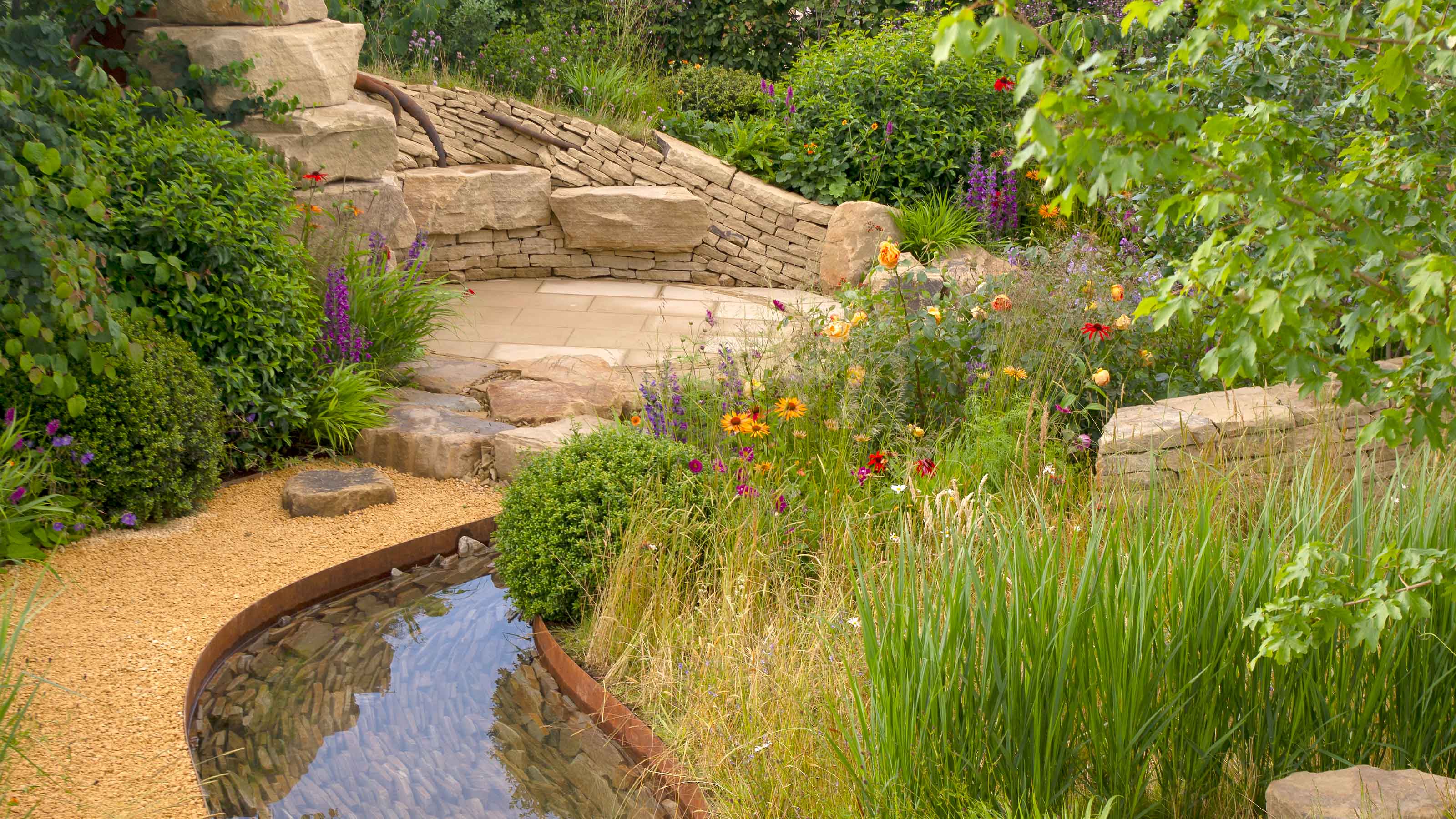
Wildlife garden ideas can be applied to all types of plot – even a tiny patio or courtyard. And, despite what you might think, you don't have to embrace an unruly, naturalistic style to support your local wildlife. Sleek, modern, and well-maintained spaces can be just as appealing to creatures great and small with the right features in place.
A successful wildlife garden will encourage all manner of animals, birds and insects to spend time in your space, helping you to get closer to nature in the process. Not only is this beneficial to the environment, but it's also good for the soul as it reduces stress levels and promotes feelings of wellbeing.
The key to any wildlife-friendly garden is to create as many different habitats for animals as possible. This could range from swathes of colorful planting fit for pollinators, a soothing water feature, a woodpile, or even a bug hotel. There are endless ways that you can do your bit for nature and raise your garden's style credentials in the process, too.
We've put together some of our favorite wildlife garden ideas to get you inspired. And once you've got the lowdown on how to get a nature-friendly space, take a look at our garden design ideas for more gorgeous updates.
1. Opt for prairie-style planting
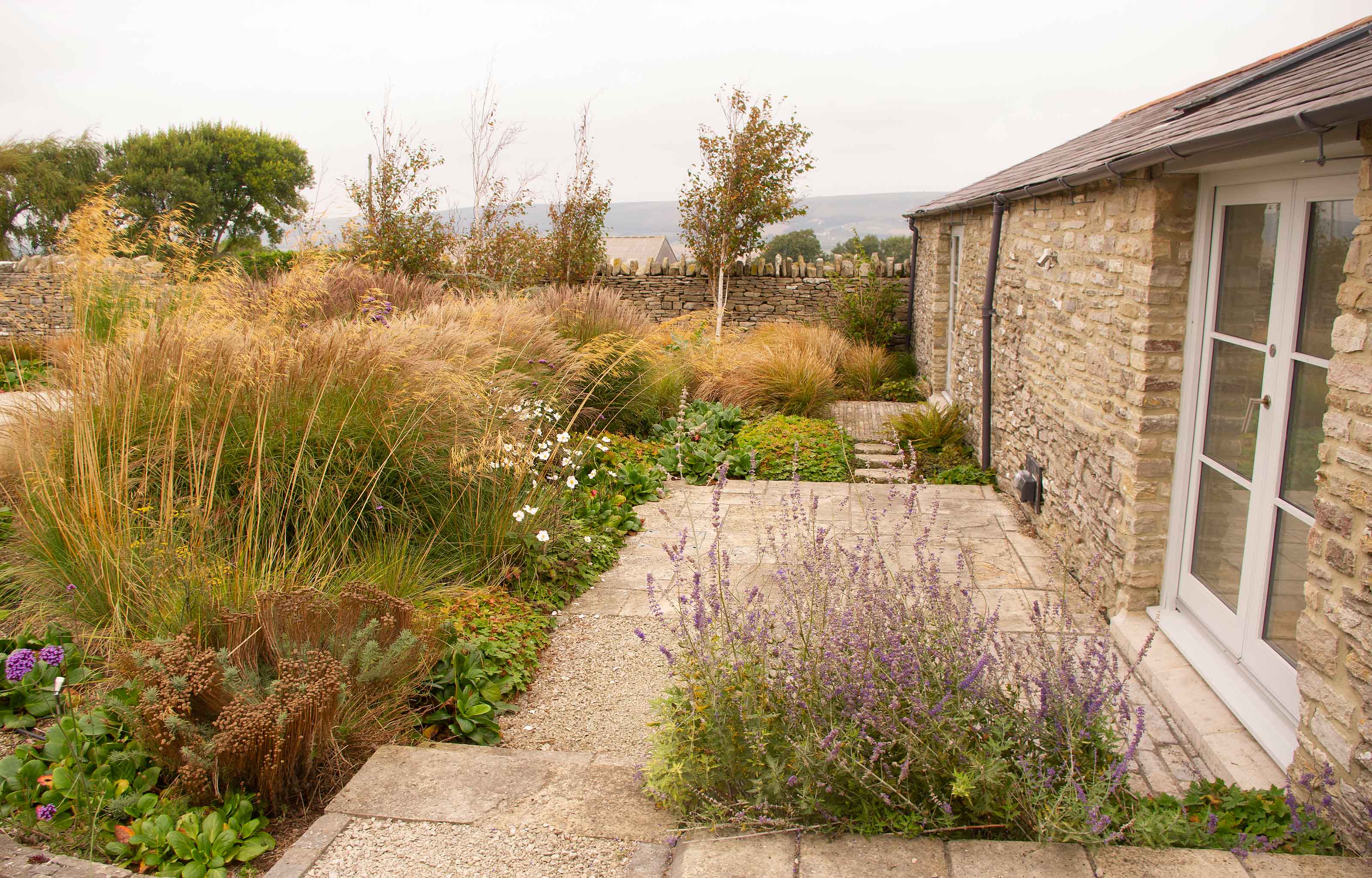
Billowing borders filled with tall perennial blooms and ornamental grasses is a gorgeous sight, and will give any plot a more naturalistic edge. It's ideal for softening areas of stone, like in this garden above designed by Helen Elks-Smith.
And, when it comes to wildlife garden ideas, this prairie style of planting is ideal. Not only will it attract butterflies, but birds will love it too as they forage for seeds.
What's more, the mix of textures and gentle movement as the scene sways in the breeze will add a soothing sense to your space. Take a look at our sensory garden ideas for more lovely designs.
2. Add a nature pond
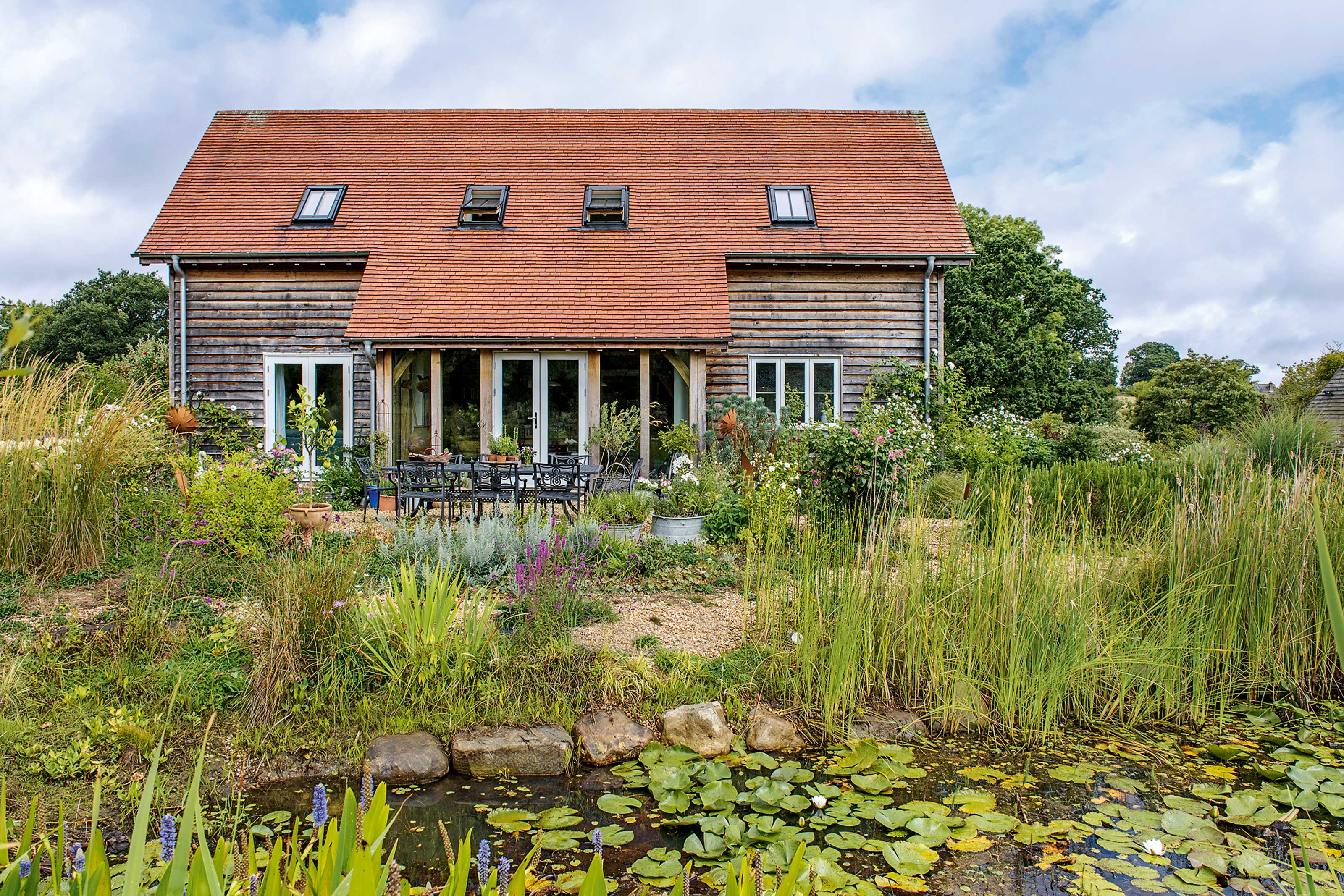
Garden pond ideas aren't just visually pleasing additions for a plot, they're great for visiting insects and animals, too.
'Adding water to your garden is one of the best things you can do for wildlife, and every little bit helps!' says the team at RSPB. 'Ponds provide a source of drinking water, a spot to clean and cool down, and can even be a breeding spot for frogs and newts.' Plenty of aquatic plants will offer shelter, and bring extra greenery and interest to your garden.
Want to build your own? There's a handy step-by-step guide at the bottom of this feature.
3. Reflect the natural landscape

When thinking about wildlife garden ideas, take a cue from the natural landscape. This RHS-gold-medal-winning garden, designed by Helen Elks-Smith, is inspired by the landscape of Yorkshire, UK and makes a stunning example.
A gently flowing water feature curves through pockets of naturalistic planting, whilst harder landscaping features, including a dry stone wall, are made from local stone.
The scene is reminiscent of the meadows and woodlands of the wider natural environment and will welcome all manner of birds, bees, butterflies, and other creatures. However, it's perfectly balanced and still feels contemporary, so is sure to be loved by people, too.
4. Plant a tree

'Trees provide food, shelter and a nesting site for a whole range of animals,' says Chris Bonnett of GardeningExpress.co.uk. Insects make their home inside the tree, whilst birds will flitter overhead, their homes tucked between branches.
'The silvery white shade of the birch tree is stunning in more spacious gardens and makes a lovely home for feathery creatures,' he adds. It's also a good way to make your plot feel more private and shaded.
You could also opt for one of the best flowering trees for a stunning display of blossom, and to attract pollinators.
5. Build your own bird house
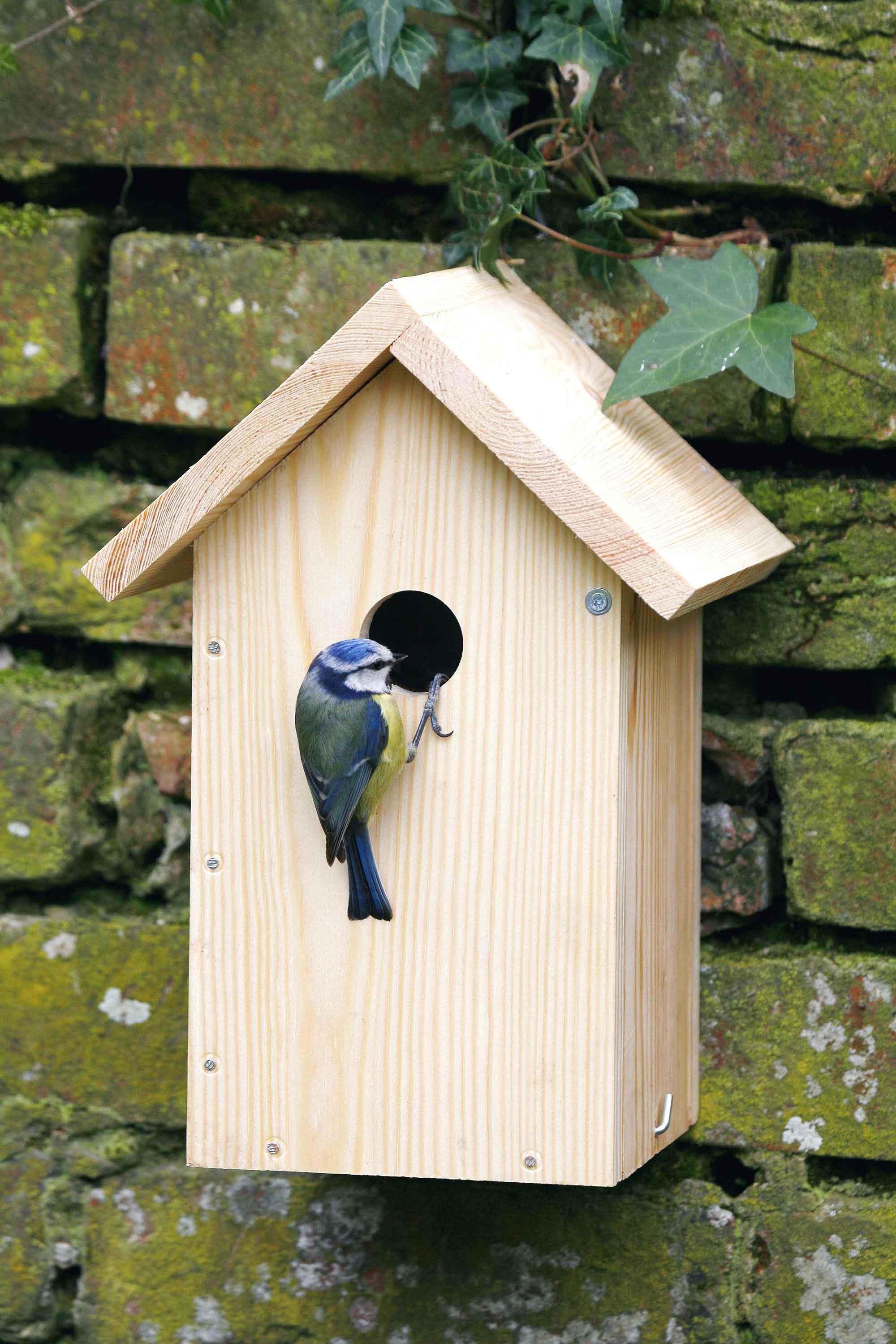
Investing in a bird house or two is a lovely feature for wildlife garden ideas. Hung up high, they'll provide a safe space for feathered friends to shelter and nest, which is crucial as their natural homes are increasingly destroyed in the wild.
There are tons of styles to choose from to match your theme. Or, if you fancy a weekend project, why not build your own from a kit like the one above?
Take a look at our bird house design ideas for inspiration.
6. Add a statement home for bees
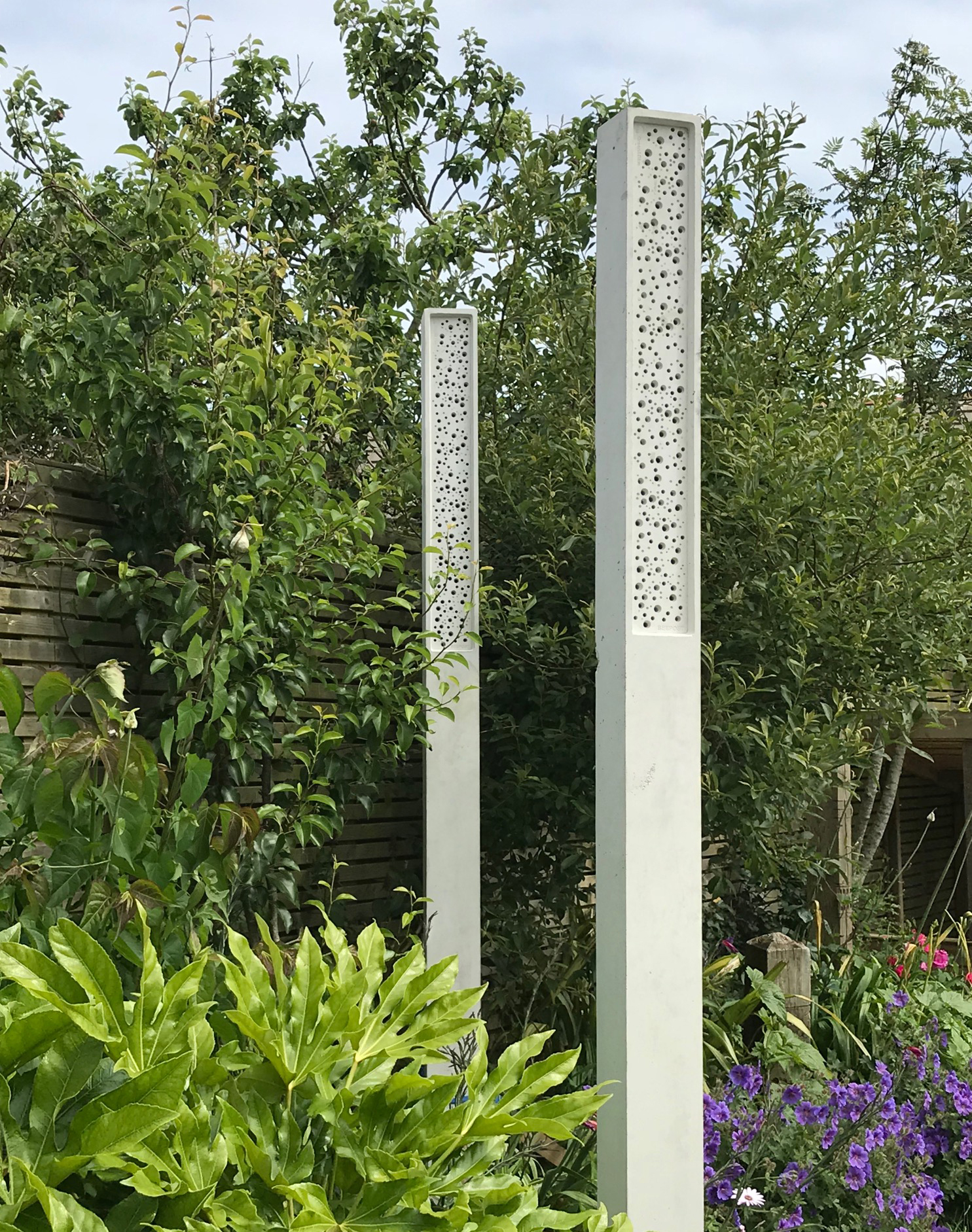
Made by mixing concrete and Cornish Granite aggregate, these tall and stately bee homes are designed to provide nesting opportunities for the sadly declining population of solitary bees.
Important for the pollination of crops and flowers these bees are non-aggressive, so completely safe to encourage into your garden. The contemporary posts work well in groups and contrast beautifully with any style of planting.
7. Provide a mini watering hole for birds

Having a supply of fresh water is just as important to birds as being fed, especially during the colder months. So why not bring a stylish bird bath into your plot? Not only will it be a lovely feature for your garden, but watching your feathered friends drink and splash about is sure to bring you joy.
This elegant design is simply stunning – the beautiful interior is enhanced by the water and creates a still, reflective pool when not occupied. Raise it up on a stone plinth or a neat side table to keep it out of reach from predators and refill with fresh water daily.
A couple of pebbles in the center will provide an extra handy perch. We've got lots more tips on how to attract birds into your garden in our handy guide.
8. Go for sculptural feeders
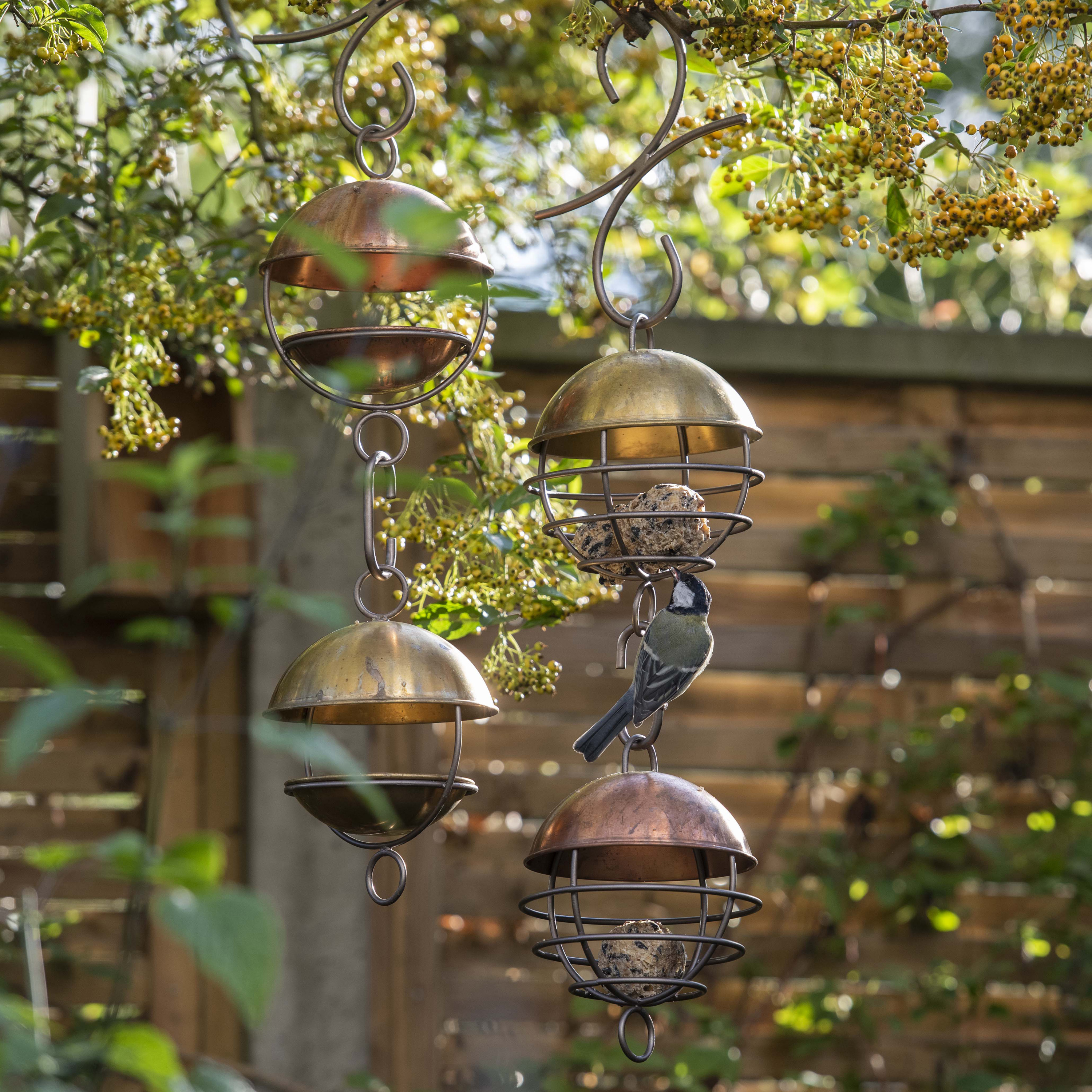
As well as providing water for visiting birds, you can't go wrong with the addition of a best bird feeder or two. These designs above provide a safe and convenient feeding point and create an eye-catching statement too.
Hang them individually or suspend them from an overhanging branch, one below the other, using the co-ordinating hooks and brackets. Brass and copper finishes are a great choice for bird feeders as they look mesmerizing set against vibrant autumn leaves.
Wondering why birds aren't flocking to your feeder? It might be its position that's the problem. 'Birds like to feed from an accessible, secure, safely placed feeder,' says QVC’s Gardening Expert, Michael Perry. 'Sometimes, if your feeder is placed out in the open and your garden is exposed to harsh winds or lots of rain, birds might feel that it is too unsafe for them to feed from.'
'Humans are large, noisy creatures, and birds can get spooked easily, so place it at the back of your garden or in an area where there is little movement,' he adds.
9. Grow flowers for pollinators

Did you know that flat-shaped blooms with open centers are a firm favorite with bees? These simple single flowers allow pollinators to easily feed from the middle, says Marcus Eyles, Horticultural Director of Dobbies Garden Centres.
Dahlias, osteospermum, asters and heleniums are all great for late summer color and will provide nourishment right up until the first frosts. Check out Sarah Raven's extensive collection of dahlias and our guide to the best bee-friendly plants for more ideas.
10. Leave a gap for wildlife
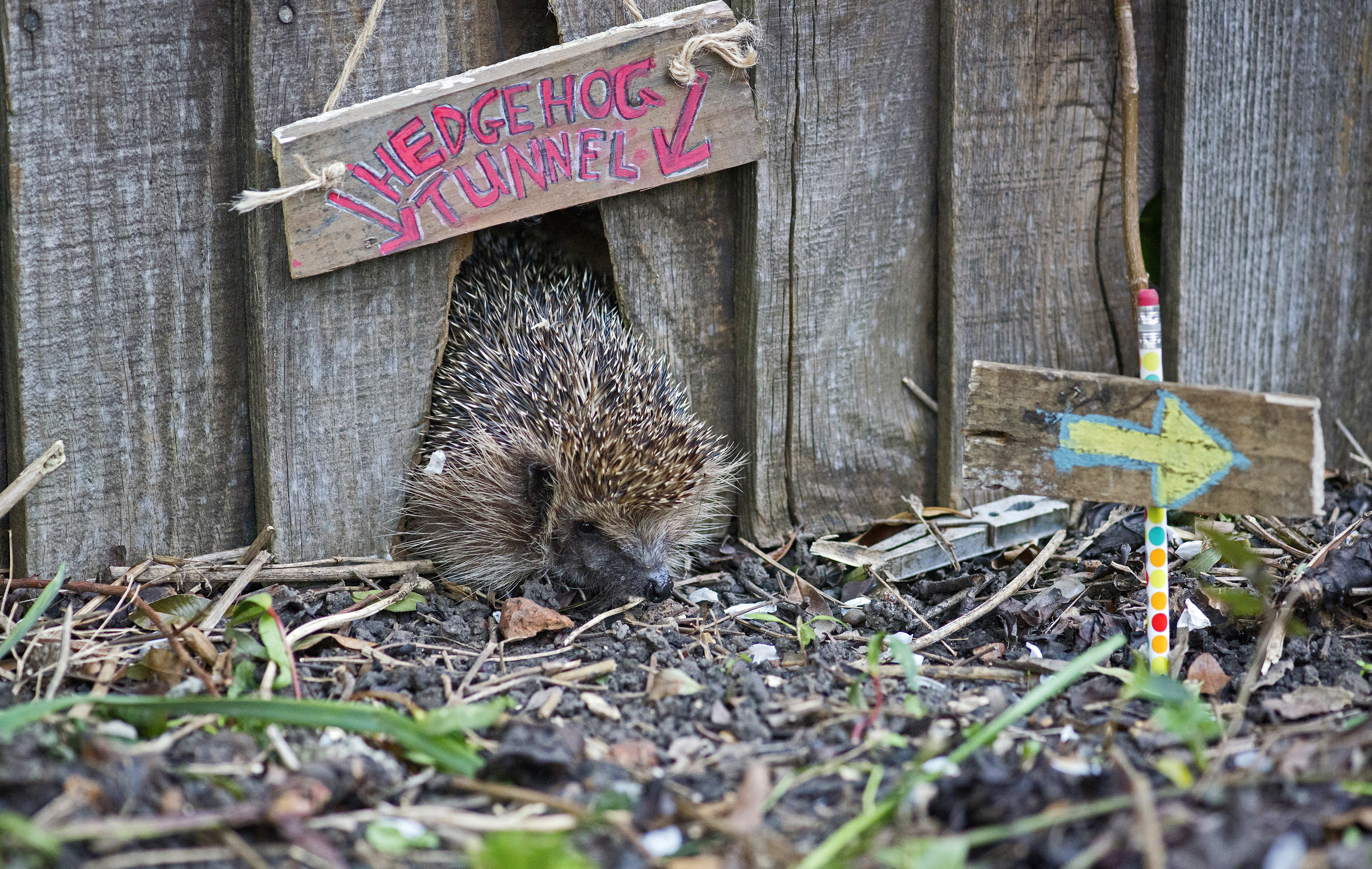
Yes, we all love privacy in our gardens (we've even collected together our favorite garden privacy ideas in our feature) but many of our smaller wild visitors need to be able to move freely on their search for food and shelter.
Hedgehogs, toads, newts, frogs and many other small mammals will travel a mile or more to mate and discover new hunting grounds, so it is important to link our green spaces together. Cutting small gaps at the base of wooden fences, incorporating short drainpipes above ground level when building new walls, and growing climbers up and over boundaries and buildings will all help to create wild byways and let these creatures thrive.
11. Plant a climber
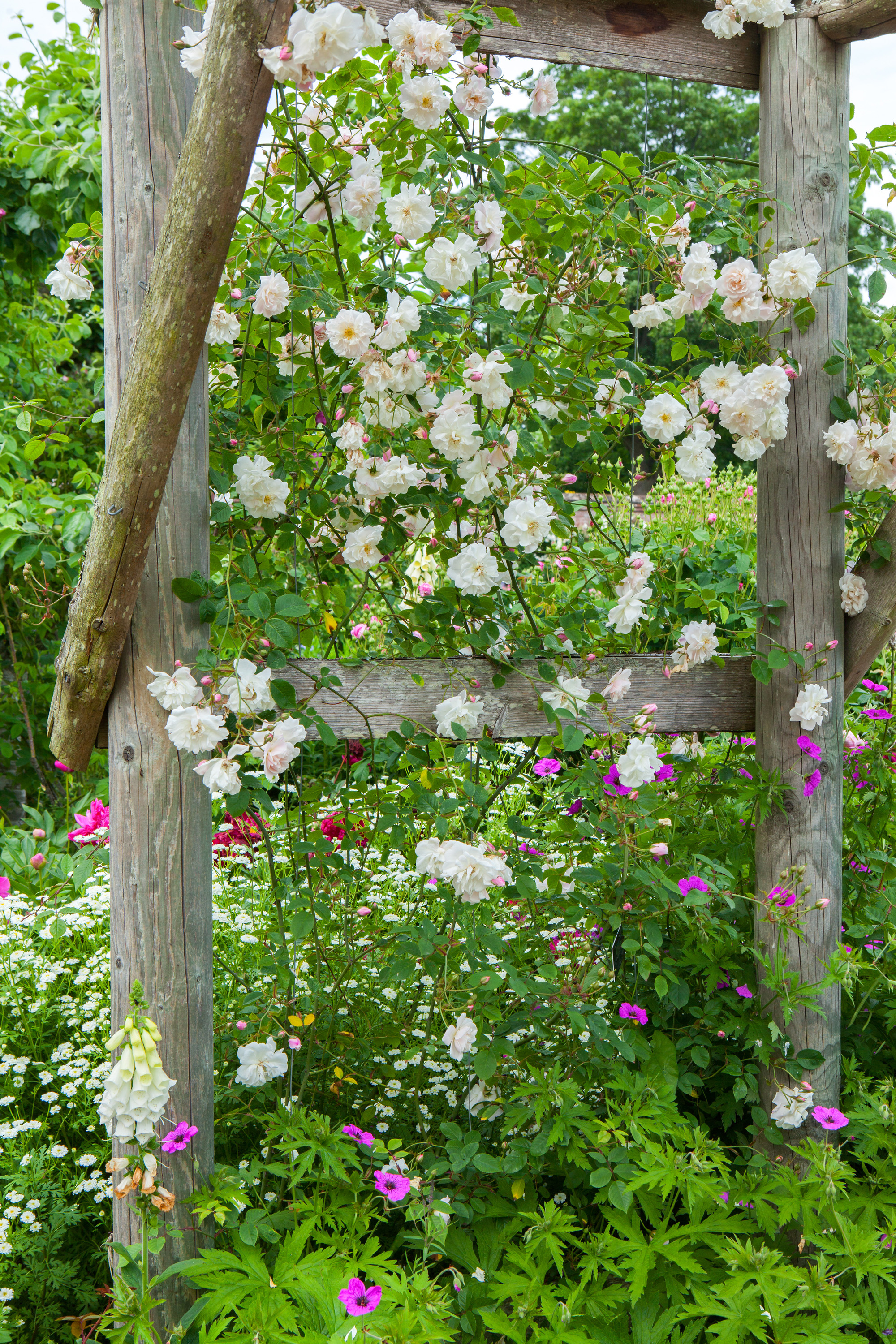
Climbing roses have a double use – they are beautifully scented and give us a lot of joy as we spend time in our gardens, but at the same time they provide cover and shelter for a wide variety of wildlife.
Birds can nest in matured climbers and bees and butterflies can feed, rest and hibernate. Other good climbers to consider for wildlife garden ideas are honeysuckle and clematis. Both are lovely varieties to have in your garden and great choices for a cottage garden scheme.
Looking for more ideas? Take a look at our guide to the best climbing plants.
12. Put up nesting pockets

Not just for small birds such as robins, treecreepers and wrens, nest pouches like these are popular with dormice and woodmice too.
Made with a strong metal frame which incorporates a handy rear hatch and a waterproof roof, they are tough enough to deter predators and are also easy to clean out. Position them in trees, climbers or woody shrubs at least 1m above the ground, and secure them in place using garden wire.
13. Encourage bats to your plot
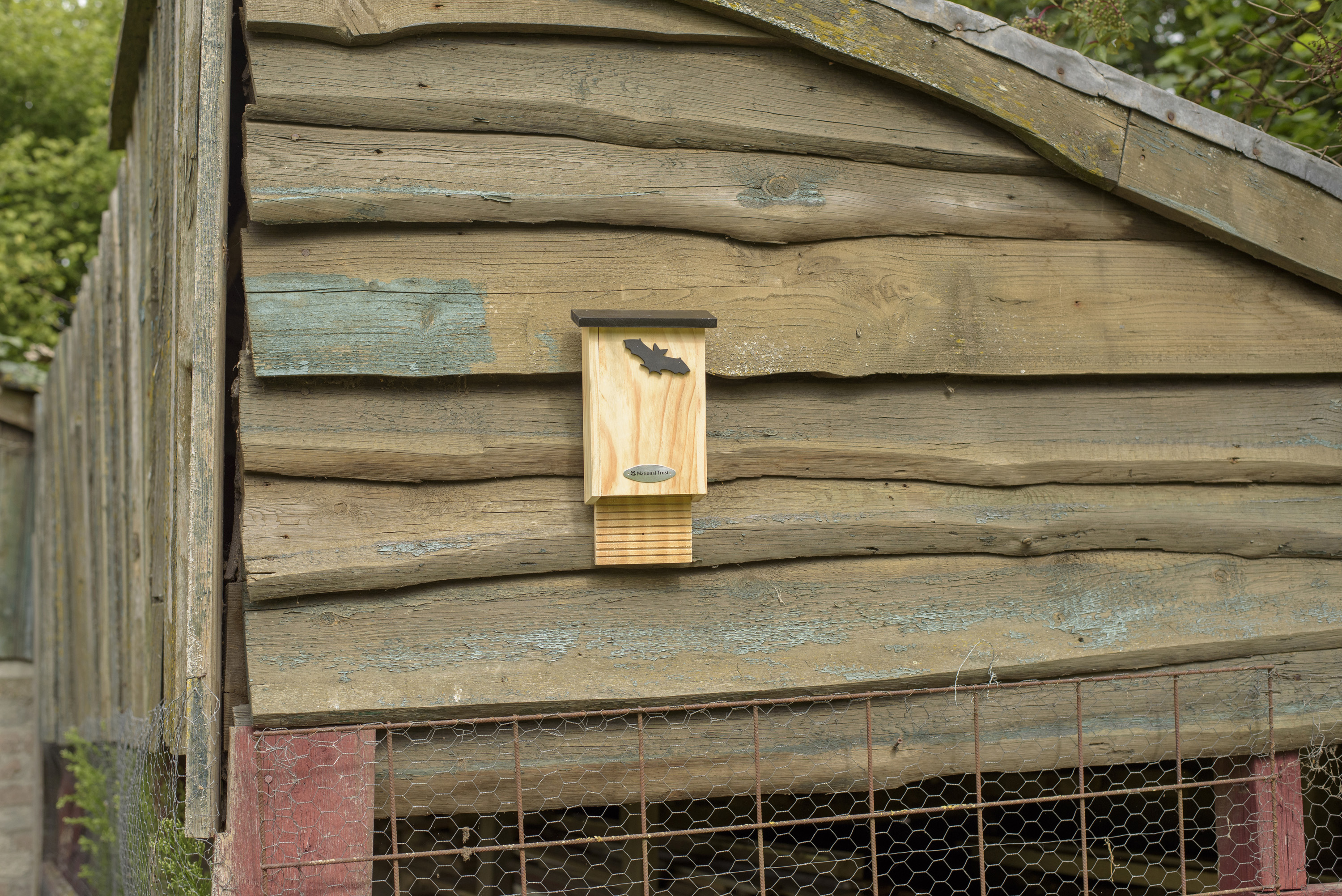
Okay, so bats might have had something of a bad press of late, and we're probably not all keen on the idea of them flying around our heads. But, they need as much love and care as our other wildlife friends do.
They rely on nooks and crannies for shelter and roosting, and as buildings get knocked down or repurposed they often lose their homes. You can help them by popping a bat box or two up in your garden to provide a safe place for them to live and raise their young.
14. Create a chic bird station
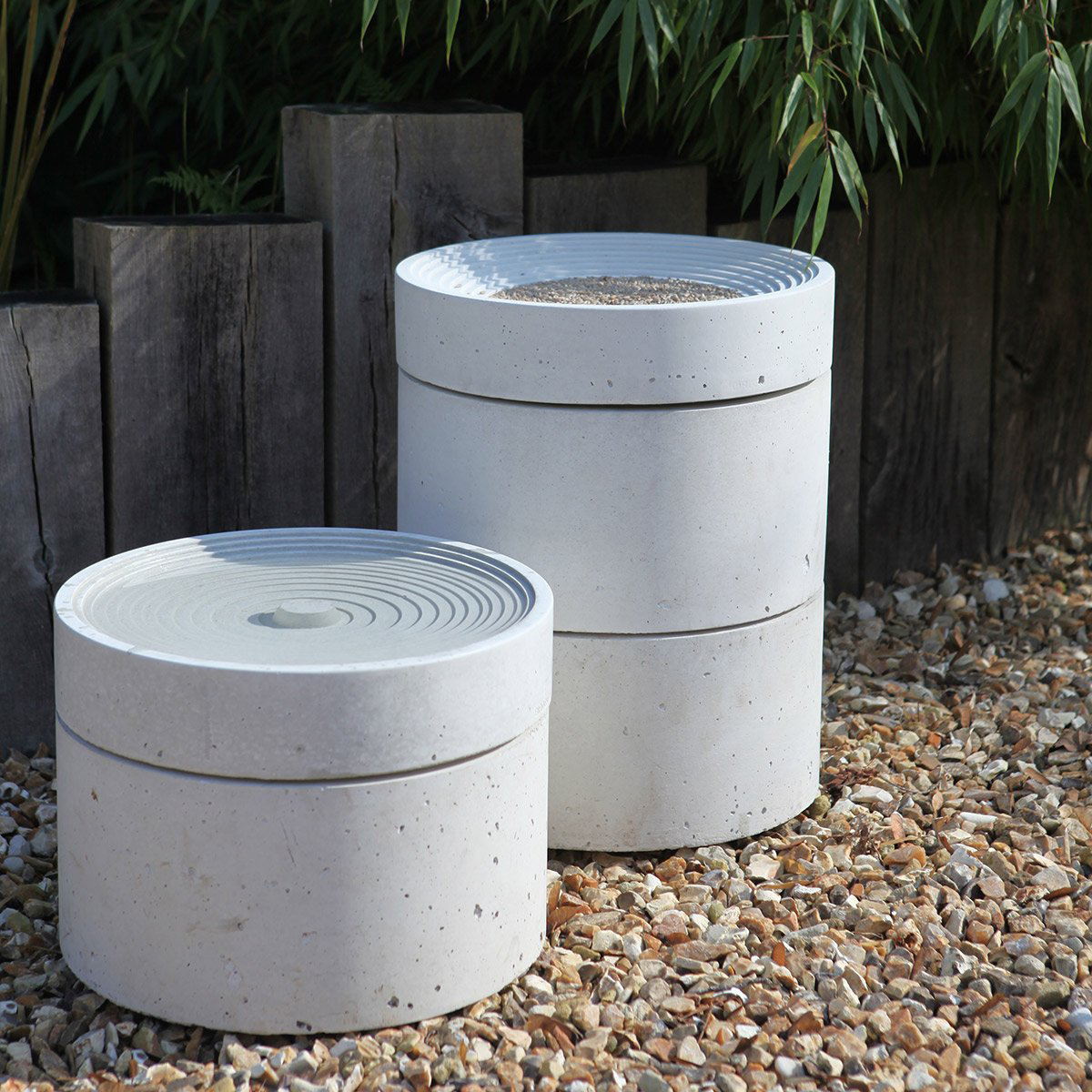
Want to bring nature into your garden without going rustic in style? Yes? Then this modern set-up is for you.
Made in Cornwall, UK using 75% China Clay waste, these bird bath and feeder designs have a pale, ethereal tone and a seductively smooth finish. Constructed from stacking cylinders you can choose the perfect height to suit your garden, before adding the final concentrically stepped dish on top. They'll make a stunning addition to your wildlife garden ideas.
15. Go for a green roof as part of your wildlife garden ideas

Turn a dull roof into a diverse habitat with flower-rich, living turf. Not only do the wildflowers and grasses attract a wide range of insects and birdlife, but they also make a beautiful, ever-changing display that's a delight to look out on.
There are many green roof systems available including interlocking pre-sown units, but established turf mats tend to be favoured by professional installers. Wildflower Turf has a carefully nurtured range of different turfs that can also be topped up with specialist seed scatter mixes and shade-tolerant bulbs.
Check out our feature on green roofs for more advice and inspiration.
16. Leave a wild area
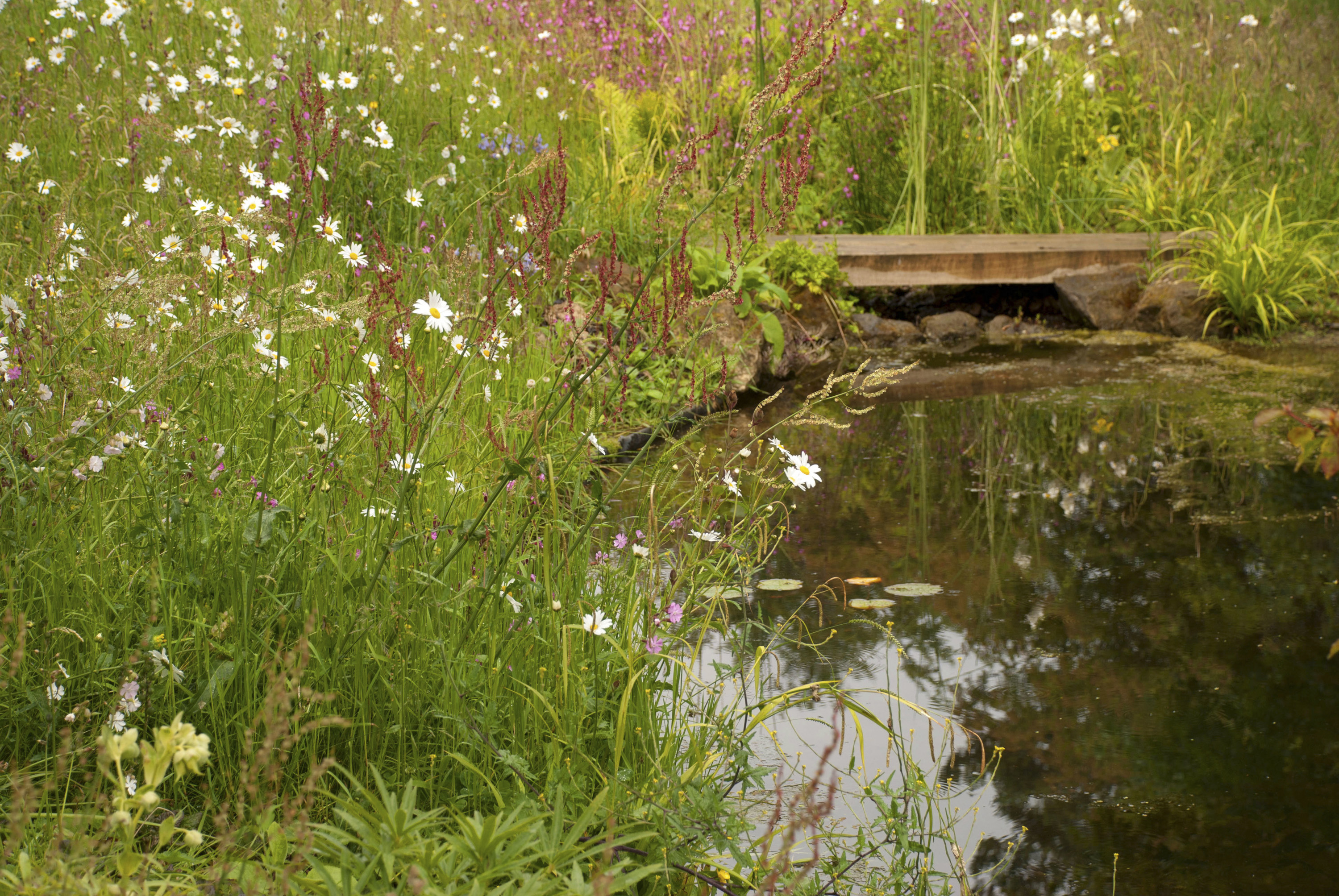
No matter how big or small your outside space is, a grassy area that is left untouched is a surefire way to attract a wide range of bugs, amphibians, birds and mammals. Pick a quiet corner such as an area under a tree, or if you're short on space, a couple of window boxes will do. Sow with a meadow mix of seeds and it will soon draw in visitors.
If you are uber-keen to see results, give nature a hand by laying a few square metres of wildflower turf. There are plenty of different wildflower combinations available.
You can also learn about how to plant a wildflower meadow with our guide.
17. Plant a hedge
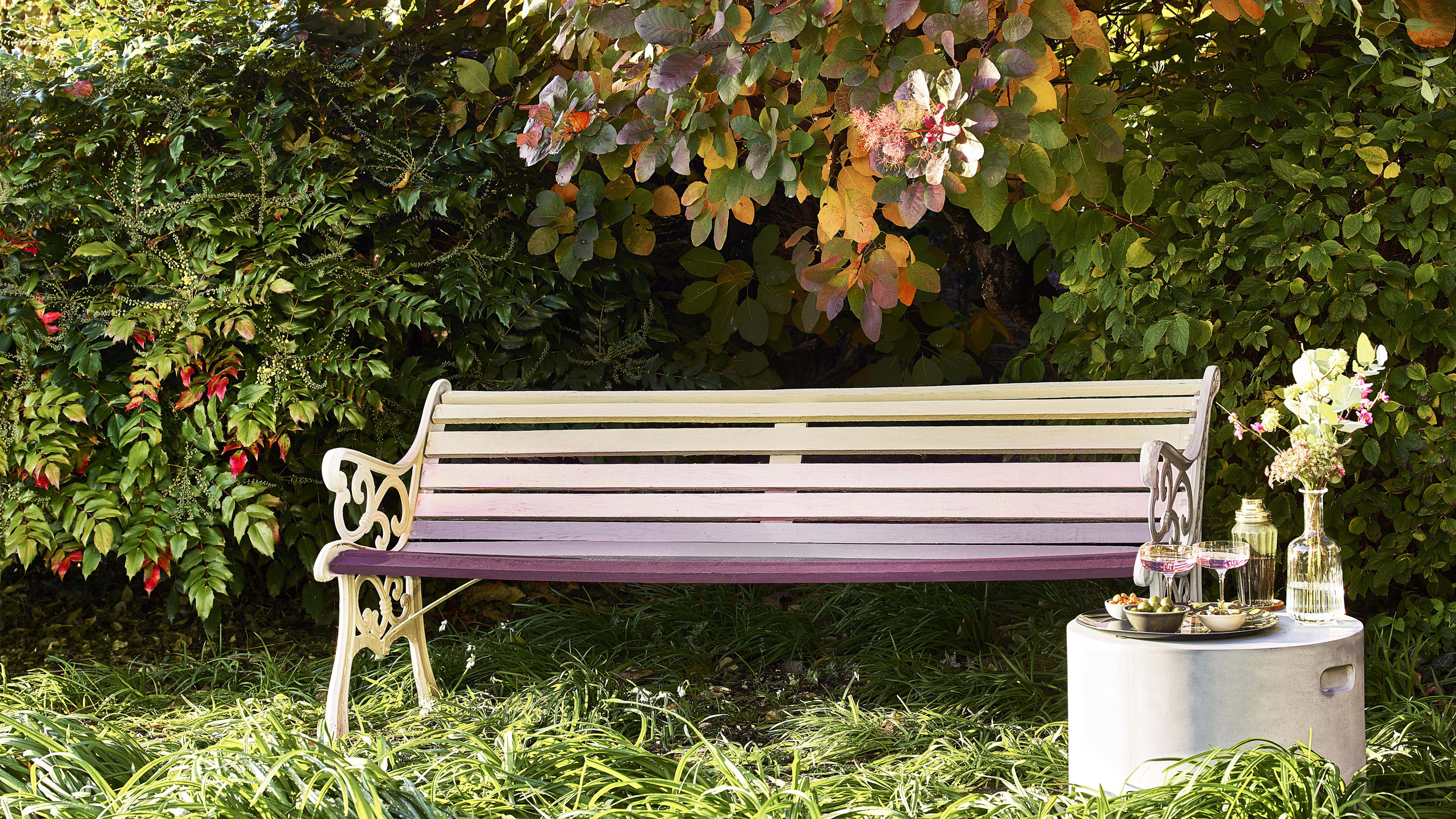
'Hedges are an excellent way to naturally shelter your garden from strong winds, meaning it will protect your more delicate plants,' says Chris Bonnett of GardeningExpress.co.uk. 'They are a great alternative to fences, and help the wildlife in the garden thrive by providing them shelter and a home.'
Not only do they provide a safe nesting site, they often provide food. Plant a diverse variety of native species – such as hornbeam, hawthorn, holly and blackthorn – for maximum seasonal interest and added home security. Or, try beech or yew for a more uniform look that will retain its leaves all year.
Our guide to the best fast-growing hedges has lots of advice on how to create a new boundary in a hurry.
18. Step back from your mower

Lawns provide a rich habitat for beetles, worms and other insects and are an important part of the eco system that allows birds, frogs, newts and hedgehogs to thrive. A perfectly manicured lawn is an achievement to most. But, for your wildlife garden ideas, try putting your best lawn mower to one side for a month or two. Or, you could keep a few sections free from cutting – such as this pretty pathway. Either way you'll be helping local wildlife to blossom.
You might even see some new wild varieties of flower popping up – buttercups and daisies, for example, will provide some lovely food for bees and butterflies. You may also spot some clover, too. This plant grows in most terrains, says Marcus Eyles, Horticultural Director of Dobbies Garden Centres. They make great animal fodder and are a magnet for honeybees. 'Let a patch of your lawn grow and watch the bees flock to your garden,' he says.
19. Build a bug palace
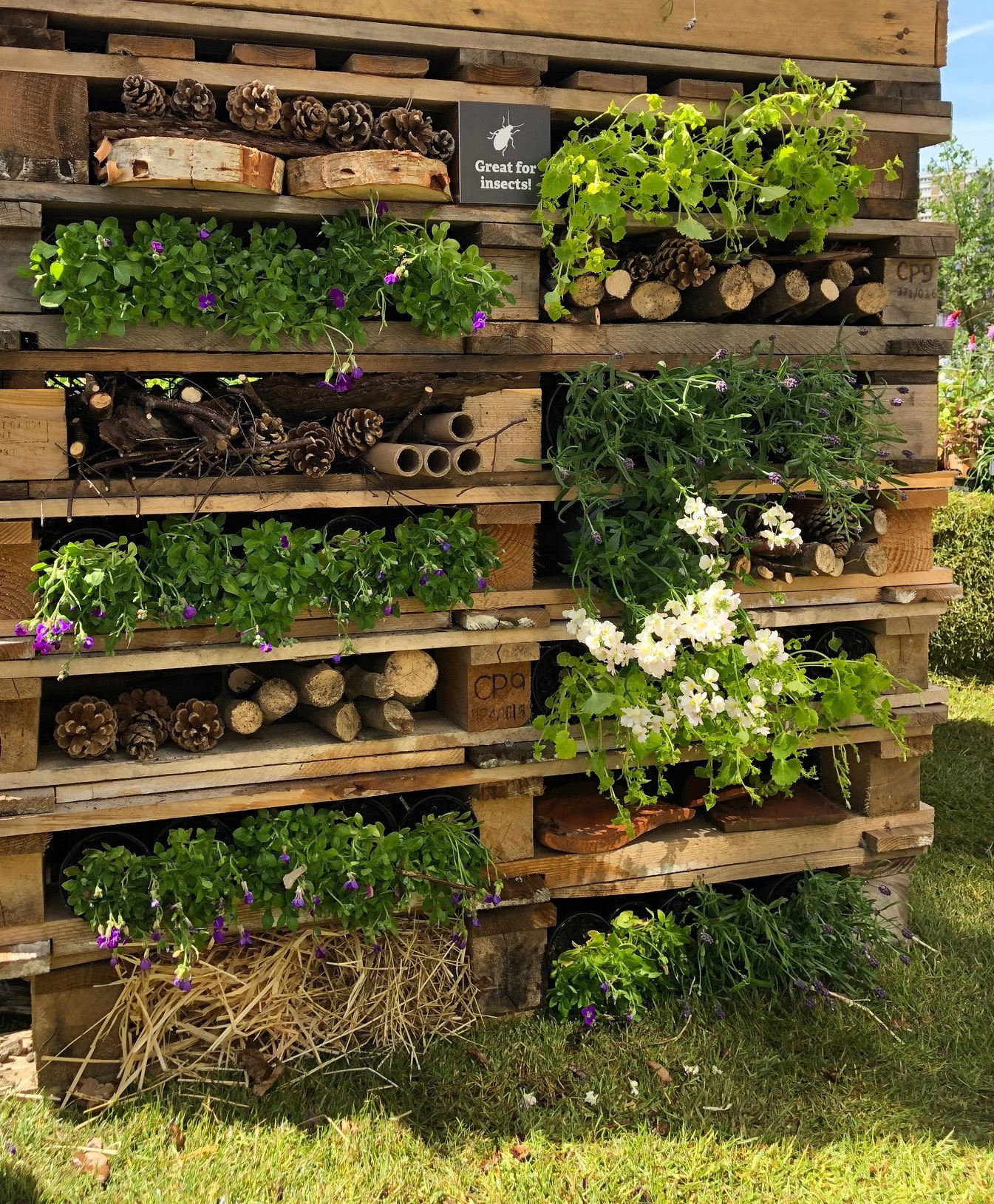
Learning how to make a bug hotel is a project that the whole family can take part and take pride in. It's also a great way to tidy up your patch.
Start by creating a solid timber frame – a neat pile of wood pallets held firmly in place with timber stakes is a quick and easy option. Once everything is secure, fill the gaps with nesting materials. Try using everything from straw, twigs, pinecones, garden prunings, wood offcuts and even roof tiles.
Repeat some of the materials in different slots for a cohesive rather than chaotic look, and remember to plant up the occasional gap with compost and flowering creepers such as nasturtiums, heartsease and English lavender.
20. Bring in the butterflies
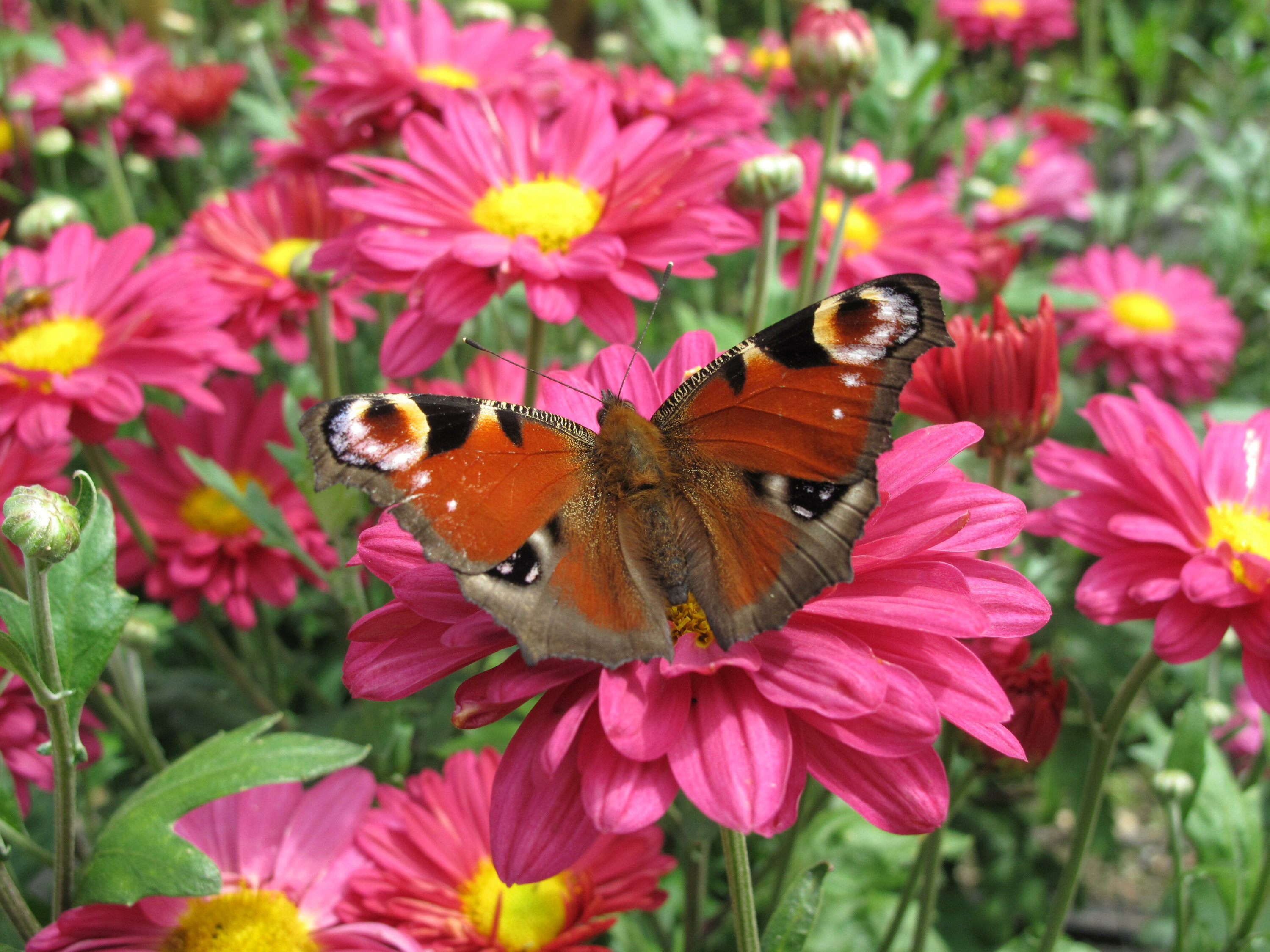
Marvel at the color and beauty of these winged beauties by enticing them into your garden. Recent national reports have shown a 76% decline in Britain’s butterflies over the last 40 years (and the US butterfly population is declining too) so it makes sense to do all we can to help them thrive.
Grow nectar-rich plants such as fragrant herbs, lavenders, nasturtiums and chrysanthemums in pots and borders and scented climbers such as star jasmine and flowering ivy. Many companies sell specific butterfly seed mixes which combine native flowering varieties with those that are popular with hungry caterpillars.
Head over to our guide on how to grow a butterfly garden for more advice.
21. Get composting for your wildlife garden ideas
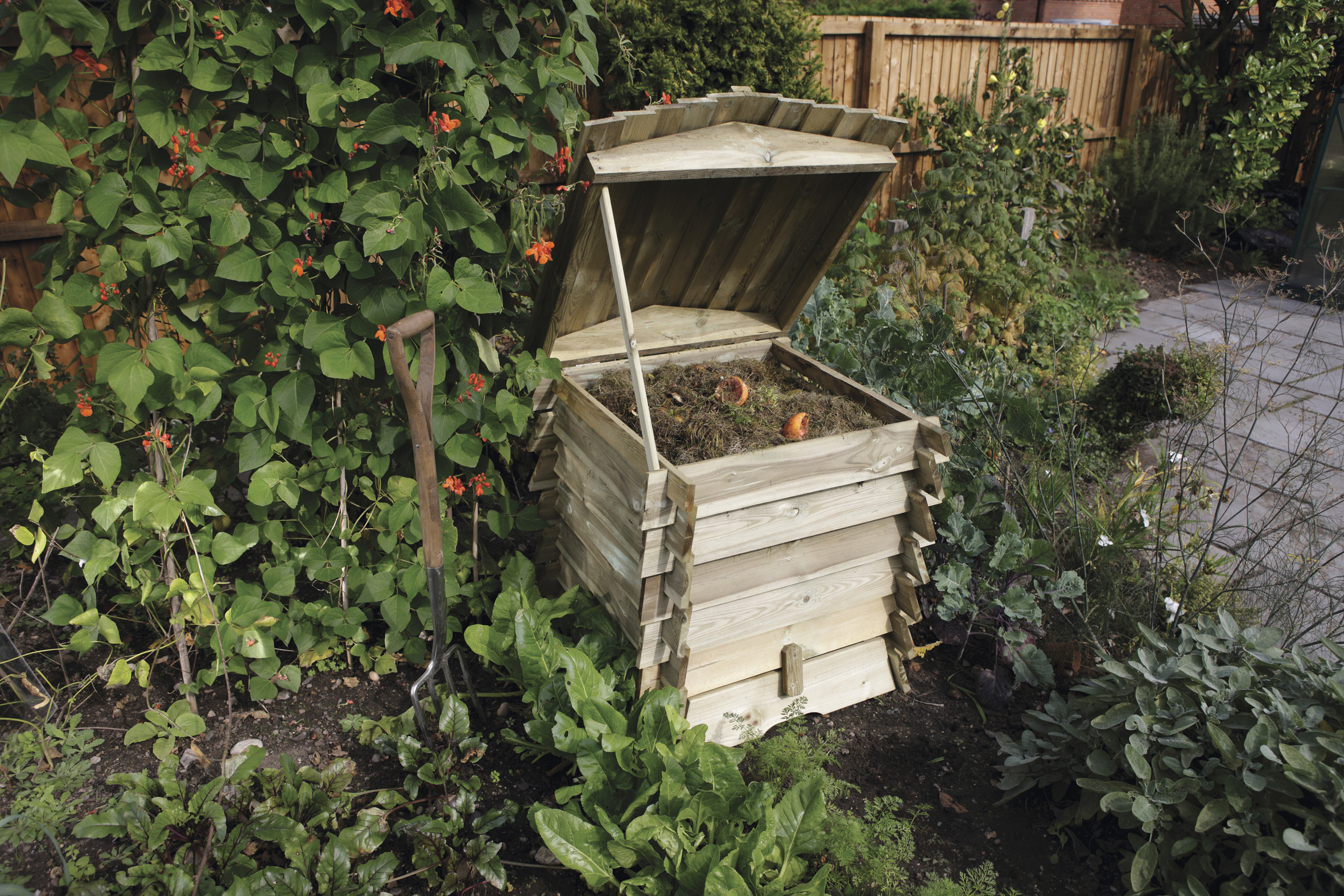
Learning how to compost so you can create a compost heap in your garden will give a refuge to many wildlife species, such as woodlice, birds, slow-worms, grass snakes, beetles, hedgehogs and toads. It will provide a warm safe haven for them and will give you some goodness for your garden.
You can also recycle your kitchen and garden waste to make a rich organic compost, with a little help from the wildlife that will reside in it of course.
You can make your own composter with wood from a DIY store or even old pallets. Alternatively, head over to our best compost bin feature to find a ready-made one for your garden.
22. Keep your own bees

Okay, it's a commitment – but if you want to go one step further with your wildlife garden ideas, then keeping bees is really rewarding. You get to watch their activities first-hand, learn about these insects that originated over a million years ago and, of course, enjoy your very own honey.
23. Add a small water feature
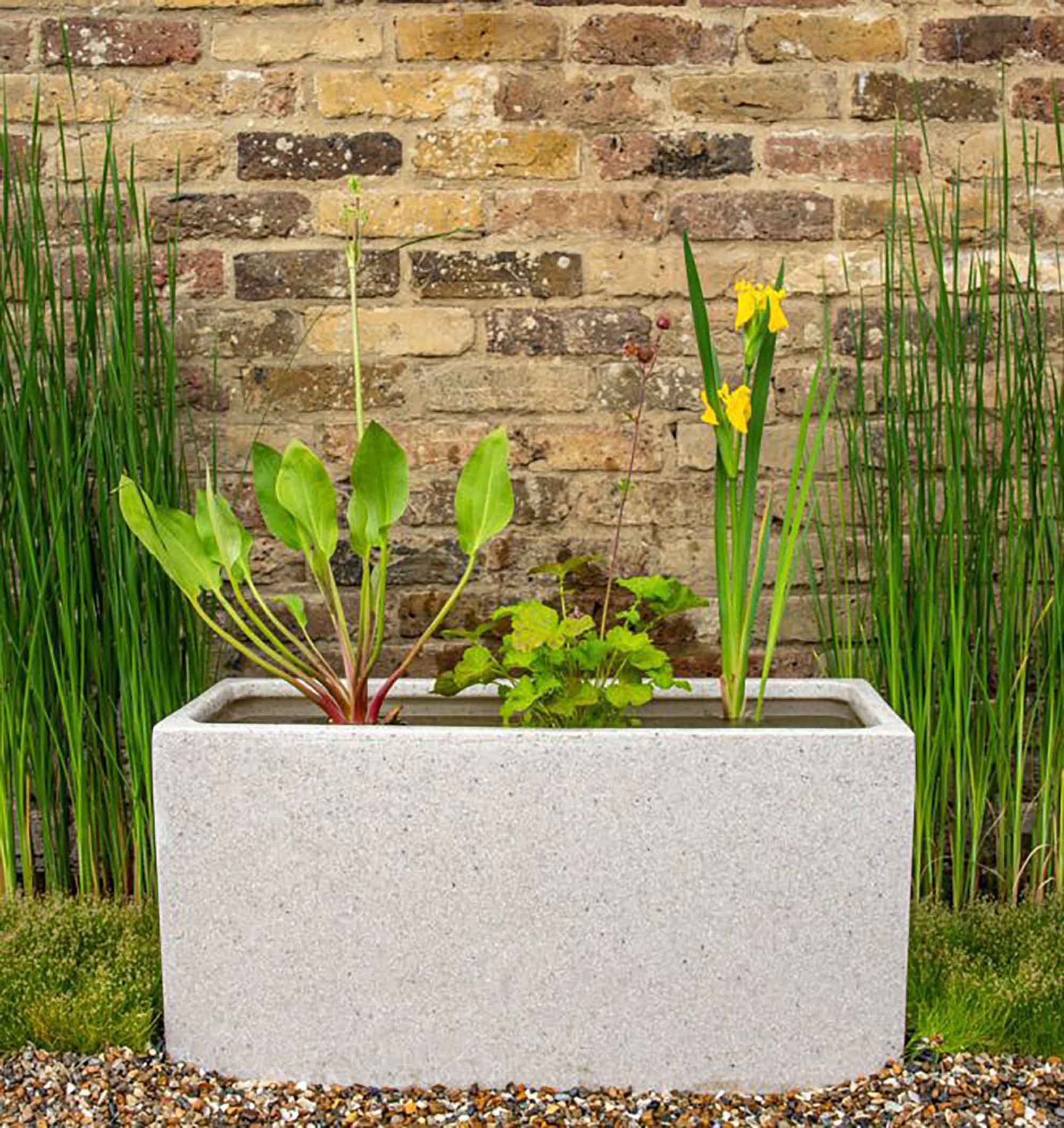
Don't have room for a pond? Even the smallest of water feature ideas can attract a wide range of animals and insects. Choose a watertight container, ideally wait for it to fill with rain, and then add a few carefully chosen aquatic plants.
You will need to seek out slower growing, non-invasive species such as golden club and floating heart for smaller pots. But, if you want a hassle free and – of course – stylish combination check out the design above.
24. Plant up your paving
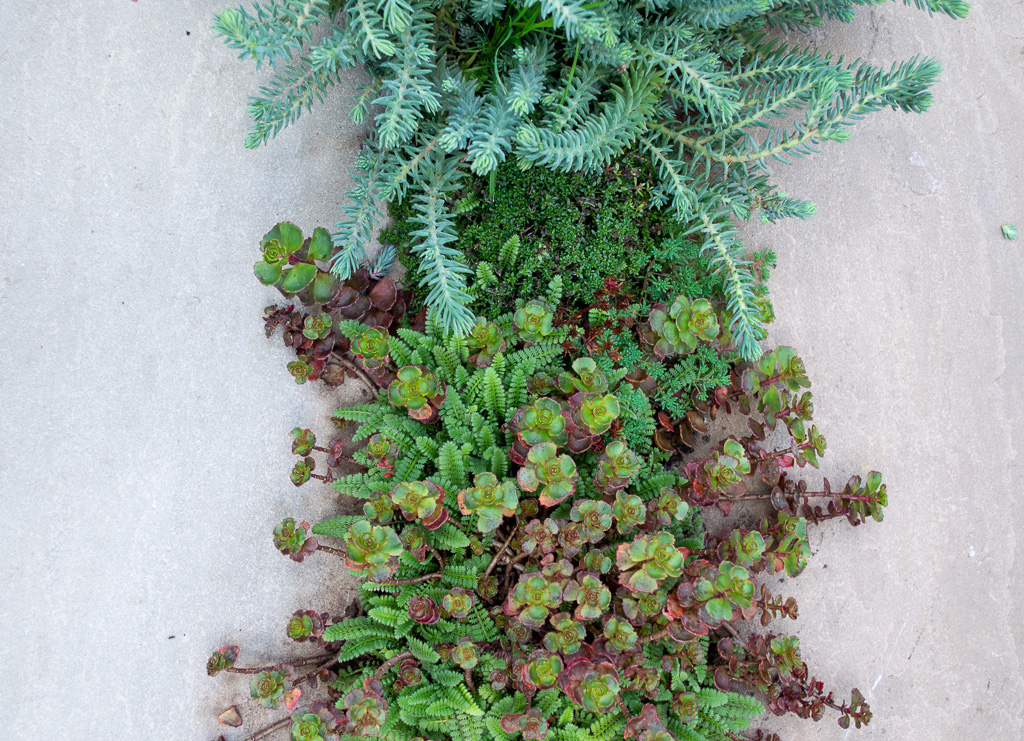
Lifting the odd paving slab and filling the space with gravel and plants is a great way to soften the look of large paved areas. Plus, it provides extra run-off drainage and the chance to attract beneficial insects too.
Choose low-growing sun lovers such as sedums, gentians and sisyrincium. There are even some plants – creeping jenny and thyme for instance – that will cope with being driven over, so there is no excuse for not greening up your drive.
Take a look at our driveway ideas for more inspiration if you're after an update.
25. Don't tidy up!
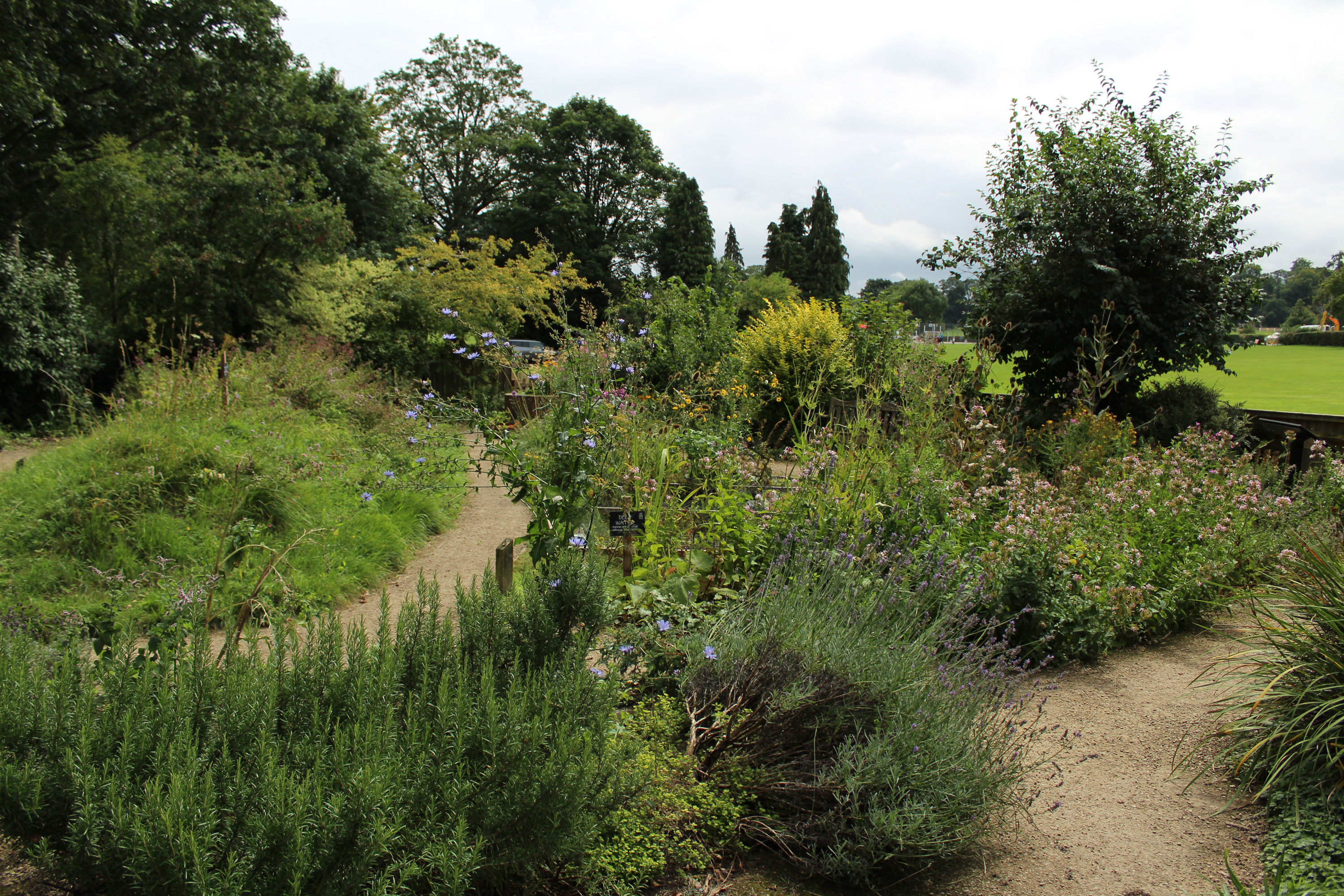
Having a neat and tidy garden during autumn and winter can actually hinder our garden friends. So, for your wildlife garden ideas, keep seed heads uncut for the birds, let the creepy crawlies shelter amongst the plant stems, and allow toads to hide under the leaves. Ladybirds love to overwinter around perennial plants too, so avoid the urge to cut them back.
Another good tip is not to dig your garden soil unless you are planting, or why not try the no-dig gardening method instead? Not digging really helps earthworm and beetle larvae populations to increase.
Trying this approach for your wildlife garden ideas is less work for you, and offers more support for the environment – a win-win in our books.
What are the best plants for wildlife garden ideas?
'Having a variety of different plants is best to help different types of wildlife,' says Chris Bonnett of GardeningExpress.co.uk. 'Bees, butterflies and pollinating insects will prefer flowers, whereas birds would prefer to hang out in a hedge or tree.'
'Bees and butterflies seek out nectar, it's all about food for them. A butterfly bush (as the name suggests) is well-loved and beneficial for our fluttery friends,' Chris continues. 'Interestingly, bees see color differently, and are attracted to varying shades of blue. Because of this, flowers like lavender are easy for them to spot and enjoy.' Learn how to grow lavender with our guide.
If you're opting for a hedge as part of your wildlife garden ideas, Chris recommends Japanese holly as a hardy and low-maintenance plant. It is becoming increasingly popular because it thrives in a multitude of growing conditions, he says. 'It is nothing like the well-known festive English holly in either growth or appearance,' he adds. 'Instead it is a lot softer and evergreen.'
Marcus Eyles, Horticultural Director of Dobbies Garden Centres, also has some recommendations for wildlife garden ideas. He suggests the likes of honeysuckle for scrambling up trellises, as its sweet nectar attracts bumblebees. Marcus also suggests foxgloves: 'A cottage garden favorite, foxgloves are tall and elegant, with long-tongued bumblebees able to drink easily from the tubular shape of the flower. Full of rich nectar, the little tubes also add a pop of vibrant summer color to your garden,' he says.
In the UK, look out for plants that carry the RHS 'Plants for Pollinators' badge as a simple way to find plants that will attract pollinators, Marcus adds.
One other thing to consider, as the RSPB points out, is the the environmental implications of bedding plants. They may have been raised on an industrialised scale in huge heated glasshouses and shipped from overseas, the team says. 'The containers they are grown in do not usually recycle or biodegrade well and the plants are usually grown in peat.' Instead, look for native plants, including those that you can grow from seed. Learn more about how to grow flowers from seed in our guide.
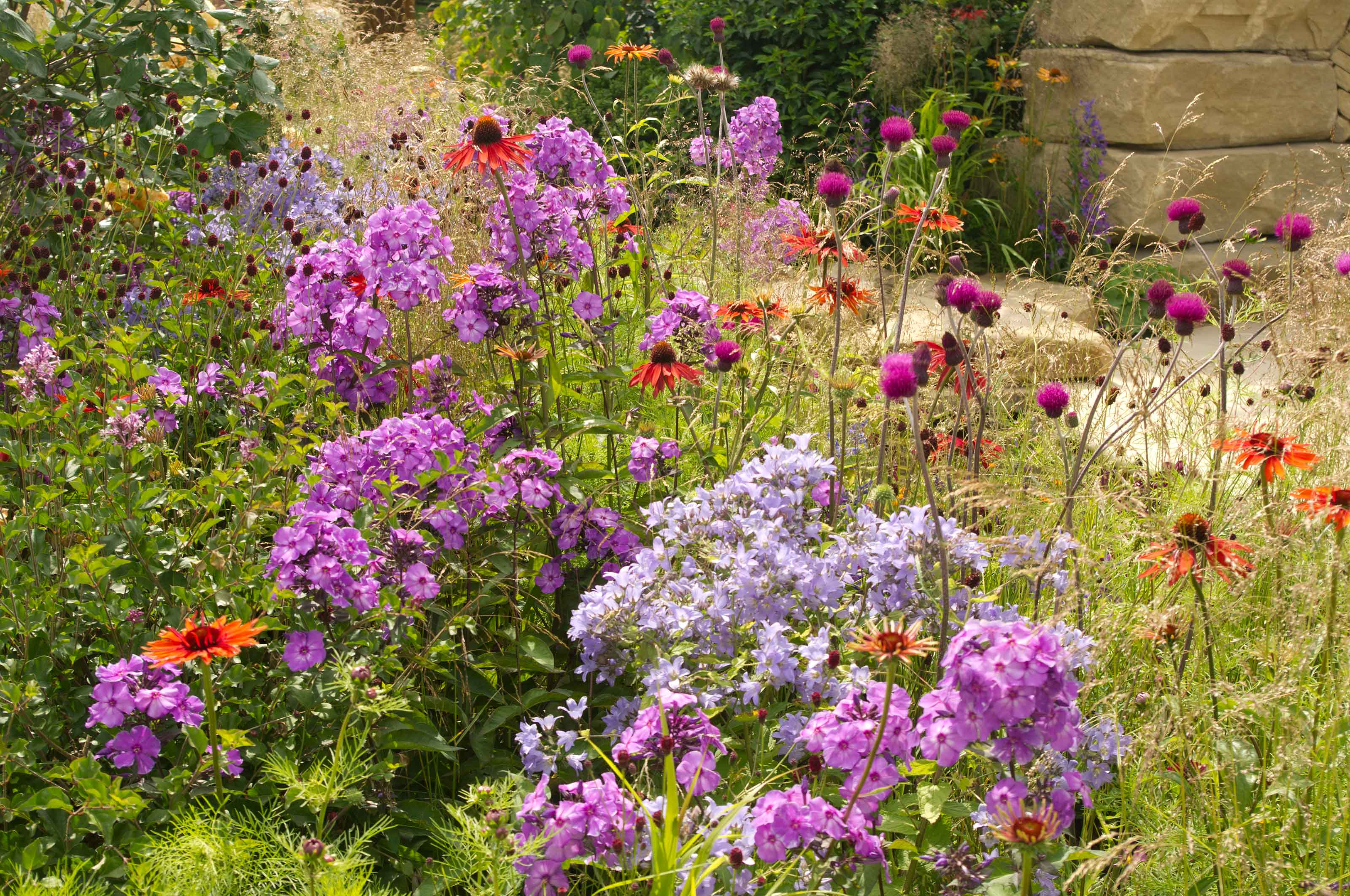
How do you make a wildlife pond?
'It's such fun to help wildlife with a pocket pond – it needn't be big,' says Ellie Brodie, Senior Policy Manager at The Wildlife Trusts. 'All you need to do is fill an old sink or washing-up bowl with rainwater, plant it up and make sure that wildlife can get in and out – it's easy!'
You can also dig one straight into the ground if you have the space, then add a pond liner. Our guide on how to build a garden pond is full of practical advice.

Jill puts her love of plants and all things garden related down to the hours spent pottering around with her Nan and Grandad when she was little. Today she is lucky enough to have a garden of her own in Surrey, England, and spends much of her time writing about them too.
